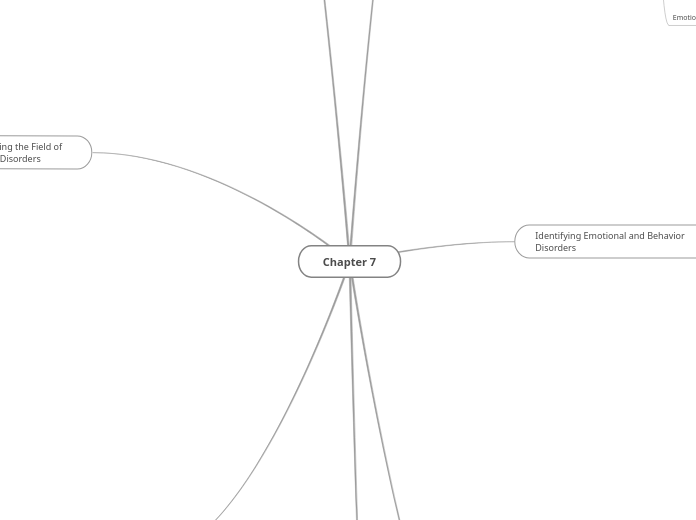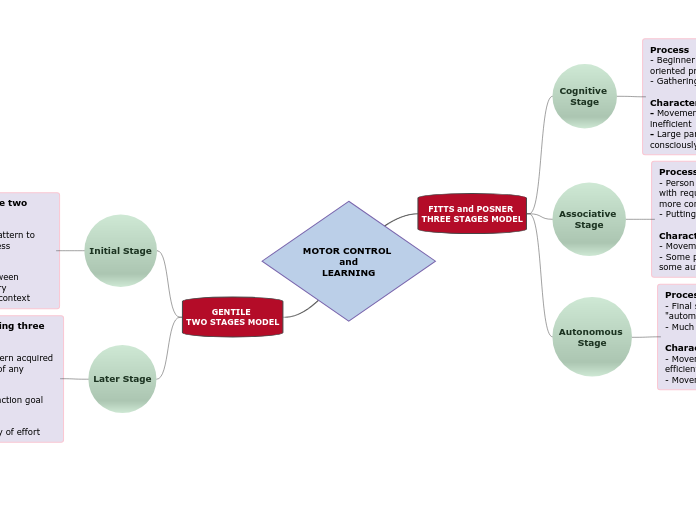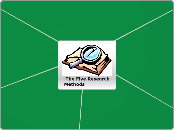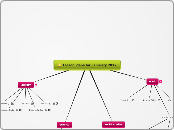Chapter 7
Recommended Educational Practices for Students with Emotional and Behavior Disorders
Examples of Specific Interventions
Teacher-Led Instruction
Teachers of students with emotional disabilities must have strong sense of confidence in their abilities to help these students and the capacity to care deeply about these students
Peer-Mediated Instruction
Cooperative learning-students work in groups of three or four and have a specific task to complete, play assigned roles, and take accountability for the learning
Peer tutoring- each student works together to practice math facts, review vocabulary, or complete other tasks. One student is the tutor and one student is the tutee
Requirements for Intervention in IDEA
Behavior Intervention Plan (BIP)
a set of strategies designed to address the function of the behavior in order to change it
Functional Behavior Assessment (FBA)
Five steps of FBA
1. Identify the problem behavior
2. Describe in detail the settings in which the behavior occurs
3. Gather information about the behavior using interviews, rating scales, observation, student records, and other techniques
4. Review the data
5. Form a hypothesis about the function of the behavior based on the data gathered
multidimensional and research-based problem-solving strategy for analyzing the student's behavior within the context of the setting in which it is occurring
The Effectiveness of Collaboration
System of care- an approach to interagency collaboration based on a coordinated network of service providers that is child and family centered, community based, and sensitive to cultural diversity
The needs of students with emotional and behavior disorders are so complex that they need to create systems for effective interagency collaboration (wraparound services)
The Importance of Prevention
Positive Behavior Supports (PBS)
Expectations are set for behavior in all settings (classroom, hallway, gym, cafeteria, etc.) and children are rewarded for following the rules
Early Intervention
May address the child's behavior as well as their language and communication skills
If early interventions are implemented with young children at risk for developing a behavior disorder then they will not experiences later problems
Perspectives of Parents and Families
Building Positive Relationships
Support Groups
Reassurance in knowing they are not alone
Trade ideas for addressing specific problems
Learn about local resources and services
Parent Education
Offer programs at times that are convenient for parents.
Teach parents strategies to address child's behavior at home.
The Impact of Having a Child with an Emotional or Behavioral Disorder
Barriers
Advocacy groups
Parents may feel anxious about working with the school or powerless to help their child.
Teachers may have negative perceptions of the family because of their frustrations with the child in school.
Students with this disorder are likely to have a parent with this or another psychosocial disorder.
The stigma of having a behavioral or emotional disorder may cause parents to hesitate to label their child as such. The stigma also can cause stress to the child.
Trends and Issues Affecting the Field of Emotional and Behavior Disorders
Use of Restraints and Seclusion
Concerns: usually prevented unless emergency occurs, little research backs up these practices, professionals question it's placement in schools
Seclusion - occurs when a student is involuntarily confused to a room. left alone, a nd prevented from leaving
Physical restraint - occurs when teacher or another professional restricts a student's freedom of movement, physical activity, or access to his body
Creating a Promising Future
More emphasis on recognizing students emotional and behavioral disorders, responding to them appropriately, and providing access through the use of the best practices
Lobbying politically for more awareness and care for emotional and behavioral disorders
Problem of Access
Medicaid isn't accessible to everyone
Only 20% of youth with this disorder receive treatment
Understanding Emotional and Behavior Disorders
Causes of Emotional and Behavior Disorders
Making sense of the factors contributing to emotional and behavior disorders
Resilience- children tend to be able to recover and not experience long-term harm from brief episodes of stress or single negative experiences
Correlated constraints- when children's lives are permeated with risk factors, those factors collectively promote maladaptive behavior patterns and subsequently constrain the development of positive adjustment
Psychosocial factors
Additional family factors- depression, peers, extreme sibling rivalry
Childhood maltreatment- physical and psychological abuse
Stressful life events- death of a parent and divorce, violence in homes and communities
Chronic stress-frequent fighting, physical abuse, not enough income, frequent moving, homelessness, bad community with shootings and drug dealings
The people around them, events they experience, and their living conditions are all factors in developing an emotional and behavior disorder
Biological factors
Brain injury could be another factor in the development of emotional and behavior disorders.
Ex: mothers that smoke or drink during pregnancy put their children more at risk of developing a disorder.
Genetics play a part in a disorder being inherited
Definitions of Emotional and Behavior Disorders
TO QUALIFY FOR SERVICES AS A PERSON WITH "EMOTIONAL DISTURBANCE": 1) Student's problem has to occur for an extended amount of time & be negatively effecting educational performance. 2) Only those meeting 1 or more of the criteria (listed by law) are eligible. 3) Some students are explicitly prohibited from being identified as having emotional disturbance (like the "socially maladjusted".)
SOCIALLY MALADJUSTED= Students who intentionally act out/break rules. These students are NOT considered to have (ED) unless they meet 1 or more of criteria.
-Individuals with emotional/behavioral disorders are referred to as those with an "EMOTIONAL DISTURBANCE"(ED). (Term used by IDEA). Federal law defines emotional disturbance as "a condition exhibiting 1 or more of these characteristics over a long period of time and that adversely affects the child's educational performance.": "1) An inability to learn that can't be explained by intellectual, sensory, or health factors. 2) An inability to build or maintain satisfactory interpersonal relationships w/ peers/teachers. 3) Inappropriate types of behaviors/feelings under normal circumstances. 4) A general pervasive (unwelcome) mood of unhappiness or depression. 5) A tendency to develop physical symptoms or fears associated with personal or school problems."
Development of the Field of Emotional and Behavior Disorders
Several factors made it hard to study children with emotional and behavior disorders
1. no consistent set of terms existed to describe these children
2. mental illness and intellectual disabilities were confused and addressed as if they were the same disorder
3. Professionals were reluctant to openly admit that children could have mental illness because this view contradicted the long held view that only adults were affected
Educating Learners with Emotional and Behavior Disorders
Transition and Adulthood
Transition programs with measurable goals
Better and more effective interventions made more widespread
Only 51% graduate from high school
Inclusive Practices
Co-teaching and other resources used in case by case
3. Mental health treatment - often need comprehensive services with mental health and academic support
2. Social rejection - difficulty making friends, general ed teachers can be negative, teachers need professional development to learn how to support students
1. Curriculum - students with emotional/behavioral disorders can have further problems, need emphasis on social skills, emotional development, and anger management
Elementary and Secondary School Services
Residential programs - usually attended by students with the most serious or dangerous emotional problems, students live at schools and attend/participate in therapeutic/recreational activities
Day treatment programs - special schools that include sped in small classes and strong emphasis on individualized instruction
Depending on the state, may be in special education classroom
Majority of these students (between 70-80%) students with these disorders in general ed
Early Childhood
Effective intervention
Home and school communication
Collaboration between professionals and parents
Development and implementation of clear classroom rules
Increased rate of praise for students when they behave as expected
Increased instructional pacing by increasing students opportunities to respond during classroom instruction
Pre-correction combined with close supervision
Early intervention can change course of lives
Risks of mother prenatal alcohol, nicotine, and drug use
Young children generally not labeled with specific disorders
Identifying Emotional and Behavior Disorders
Eligibility
Eligibility Criteria
1. Does this student have one or more of the characteristics in the definition of emotional disturbance?
2. Do the student's characteristics, as assessed, adversely affect educational performance?
3. Can social maladjustment be eliminated as the sole cause of the student's behavior problems?
Assessment
Other Assessment Strategies
Strengths-Based Assessment
measuring students' social and emotional strength, the characteristics that give them confidence and the traits that help them cope with adversity
Medical Information
If a student is under the care of a physician or psychiatrist, school professionals will request the info from those medical professionals
Classroom Assessments
An essential part of an assessment for emotional and behavior disorders is observation in the classroom, lunchroom, PE class, etc. so professionals can see what students do in a variety of settings and activities.
Formal assessments
There are several types of formal assessments that help professionals decide whether a student has an emotional or behavior disorder
Intelligence tests help determine whether a student's cognitive level might be affecting their emotions and behavior
Rating scales can be used to determine nature and extent of a student's
Characteristics of Individuals with Emotional and Behavior Disorders
Emotional and Behavioral Disorders and Comorbidity
Recognizing comorbid/additional disorders is necessary to implement proper interventions.
Many students with emotional disturbance also have other disabilities.
Cognitive and Academic Characteristics
The question of cause and effect
There is no clear answer as to what causes what. Both academic and behavioral struggles are likely to effect one another.
Although there is no direct link between intelligence and emotional problems, these students do tend to have low average to average intellectual abilities. Teachers will often assume these students have an intellectual disability and that the behavioral problems are just some of the effects.
Social Characteristics
If a student doesn't understand certain social skills, teach them.
Emotional Characteristics
Depression
Untreated can lead to suicide, which is the third leading cause of death among adolescents.
Twice as likely to develop in girls than boys during adolescence.
Symptoms
Subtopic
Thoughts or expressions of suicide or any self destructive behavior
Talk or efforts of running away from home
Major change in eating and/or sleeping patterns
Poor concentration
Poor attendance or performance in school
Complaints about physical illness
Difficulty with relationships
Increased anger and irritability
Extreme sensitivity to rejection or failure
Low self esteem and guilt
Social isolation, poor communication
Persistent boredom
Decreased interest in activities
Hoplessness
Frequent sadness
Behavior Characteristics
Externalizing behaviors
Outward behaviors, directed towards others
Internalizing behaviors
Child withdraws and turns inward
Misbehavior isn't much different from other children. It occurs more often, lasts longer, is more intense, and impacts the student's learning.









